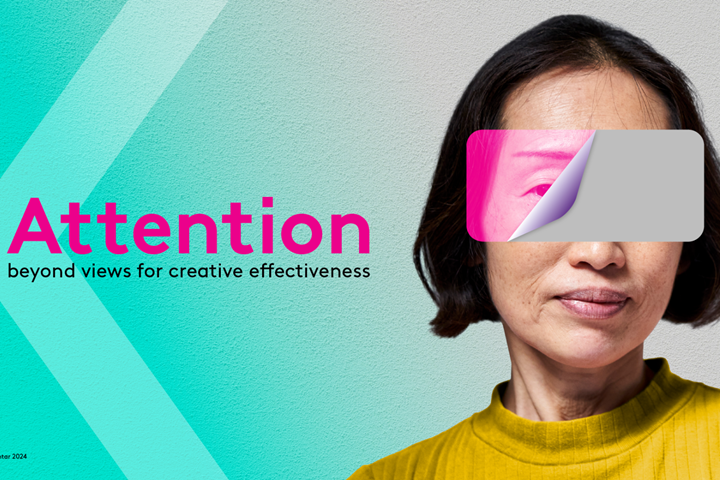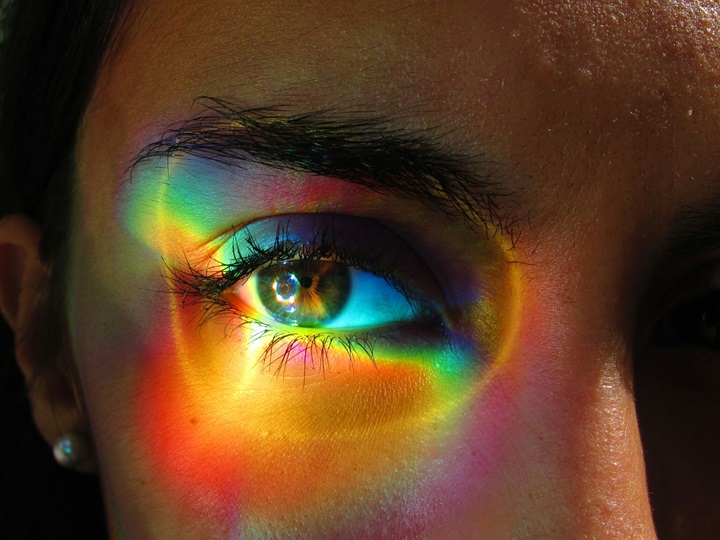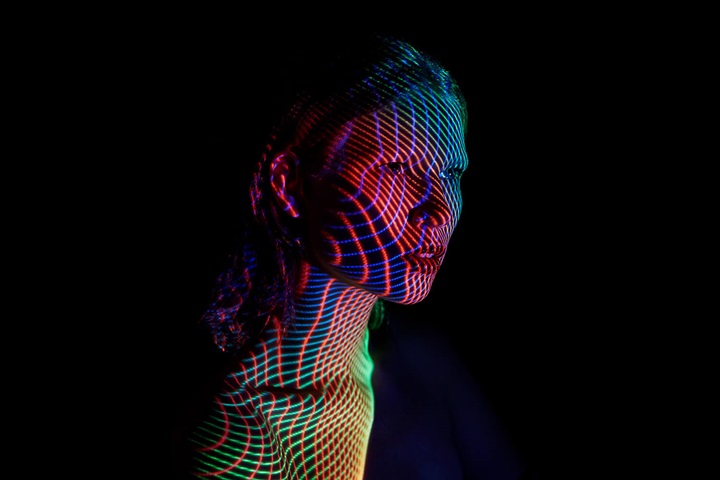There is no doubt that viewability (playback) is a necessary step, as you can’t be influenced by an ad that is not in view. But the question is, is knowing that your ad was visible on a screen enough to say that it did its job?
Great attention measures elevate ads from playback to payback
Our long-term effectiveness measure, Demand Power Contribution, which indicates an ad’s ability to drive meaningfulness, difference and saliency is found to have a strong relationship with ROMI profit. So ensuring your ad is optimised to catch the consumer’s attention and connect with them emotionally is an important milestone in enhancing your brand equity.
There is a fundamental difference between whether an ad is just seen or is actually watched. Watching (Passive attention) does not mean engagement (Active attention). Attention data from Affectiva, Kantar’s long-standing attention measurement partner, shows that the relationship between Active and Passive attention is essentially non-existent. Therefore, attention’s role in creative effectiveness requires measures beyond viewability to understand the depth of attention to truly evaluate an ad’s in-market potential.
Relationship between Active attention and Passive attention
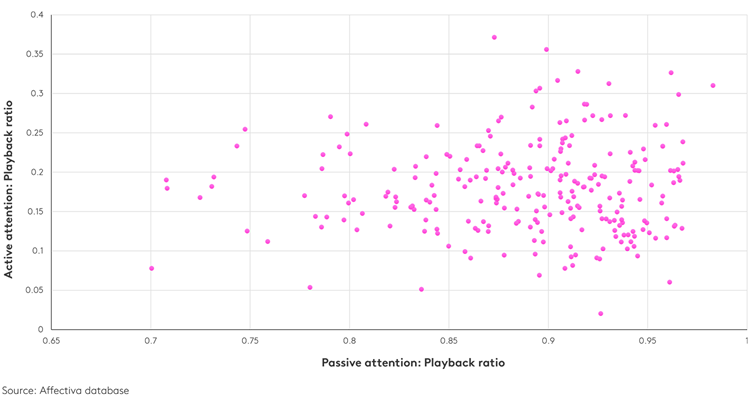
Attention’s role in advertising is heavily influenced by emotion
We know that ads that generate strong emotional responses and reactions are more likely to be successful. Our analysis shows that digital ads that leave consumers with strong emotions are up to four times more likely to drive long-term brand equity and four times more likely to generate impact compared to those with weaker emotional connections. Emotions are a cue to the brain that something is worth paying attention to. Emotional reactions are more likely to help sustain that attention and leave traces in the memory that will later influence the decision-making process. Therefore, ensuring your consumer will think of your brand when making a choice, you should start building this association by connecting with them emotionally through creative.
There are many creative elements that brands can leverage in their ads to evoke an emotional response, like storytelling, humour, or nostalgia. But of course, as with any element of advertising, the key is ensuring it fits in with your brand and message.
One size does not fit all, and not all attention is created equal
The platform is another crucial factor when choosing your creative tools, as different contexts demand different content to truly stand out and retain attention. For instance, what is funny on YouTube may not have the same effect on TikTok. Therefore, tailoring your content to the platform is a key factor. Uber’s ‘Trains, now on Uber’ campaign promoting their in-app train booking feature is a great example of how to do this successfully.
We tested three ads related to Uber’s ‘Trains, now on Uber’ campaign in the UK. The first one, ‘Gina’, is one of the two TV spots from the campaign that were also repurposed for YouTube. ‘Gina’ offers a comedic take on the typical Uber experience, such as double-checking the booking name, with a witty twist where the train driver is treated as if they’re an Uber driver. The other two ads are content creator collaborations on TikTok which we’ll here refer to these ads with their creators’ usernames as ‘Jack Joseph’ and ‘NDA’. ‘Jack Joseph’ is a parodic ‘POV’ video, a creative style TikTok users are familiar with and pictures a funny mother-son conversation that would be especially relatable for a younger audience. ‘NDA’ is less humour focused and includes the creator sharing practical information about the feature.
These ads’ different styles and production values are not random and were clearly chosen in consideration with the channel and the target group. As a result, all three ads are found highly enjoyable by their audiences and not only stand out creatively but also show high potential to contribute to the brand’s difference according to Kantar’s LINK+ in-context ad testing results.
Uber tailors ads to the platform to ensure audience engagement
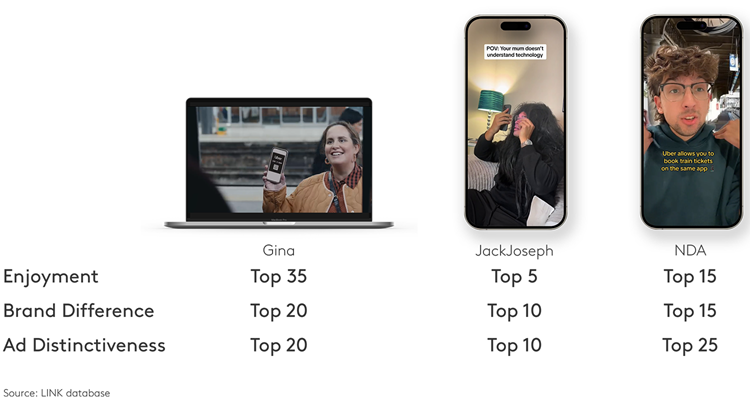
In YouTube skipping the ad during the first 5 seconds is not possible, so the initial forced seconds of ‘Gina’ has a dip in Passive attention, and naturally those who are not intrigued simply disengage by looking away. But the developing humour leads to higher attention later-on among those who stayed watching.
Second-by-second Passive attention traces of Uber’s ‘Trains, now on Uber’ ads
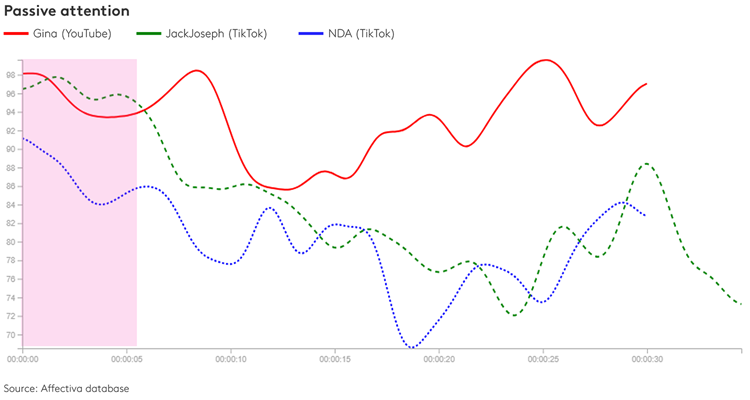
‘Jack Joseph’ and ‘NDA’ copies are both lower key in production values and are less visual-dependent videos which is perhaps what leads to a lower Passive attention The difference between the Active and Passive attention profiles from these ads illustrate that watching an ad doesn’t mean being engaged with it. While those who played the TikTok copies were not hooked on the screen as much as those who watched ‘Gina’ (as seen on the Passive attention traces), the user created content videos are even more emotionally engaging (as indicated by the Active attention traces).
Second-by-second Active attention traces of Uber’s ‘Trains, now on Uber’ ads
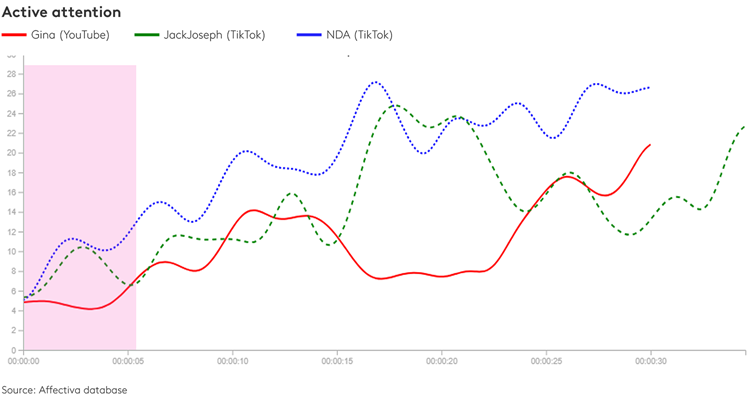
Don’t make digital videos longer than they need to be
How your creative choices will resonate with your audience can look different on different contexts, and ad length is also a part of this. What constitutes a long ad can change from platform to platform, but the one thing they have in common is that the longer an ad is, the harder it is to keep them watching. So, it’s important to find that sweet spot where your ad can retain attention but also convey your message and deliver the creative objective.
Attention is a stepping stone, not the end-goal
Last but not least, attention shouldn’t be seen as the final goal. Viewability, retaining attention and engaging the audience are all important stepping-stones on the way to advertising success. However, these steps alone won’t be enough to convey the intended message and reach your creative goal. For that reason, measuring attention for advertising impact becomes more meaningful if it is understood in the light of attitudinal metrics.
To learn more about the attention analysis from Kantar and Affectiva’s databases along with in-depth look at Uber’s and other ads performances, watch our webinar with Affectiva. And of course, please get in touch to discuss our findings further.


